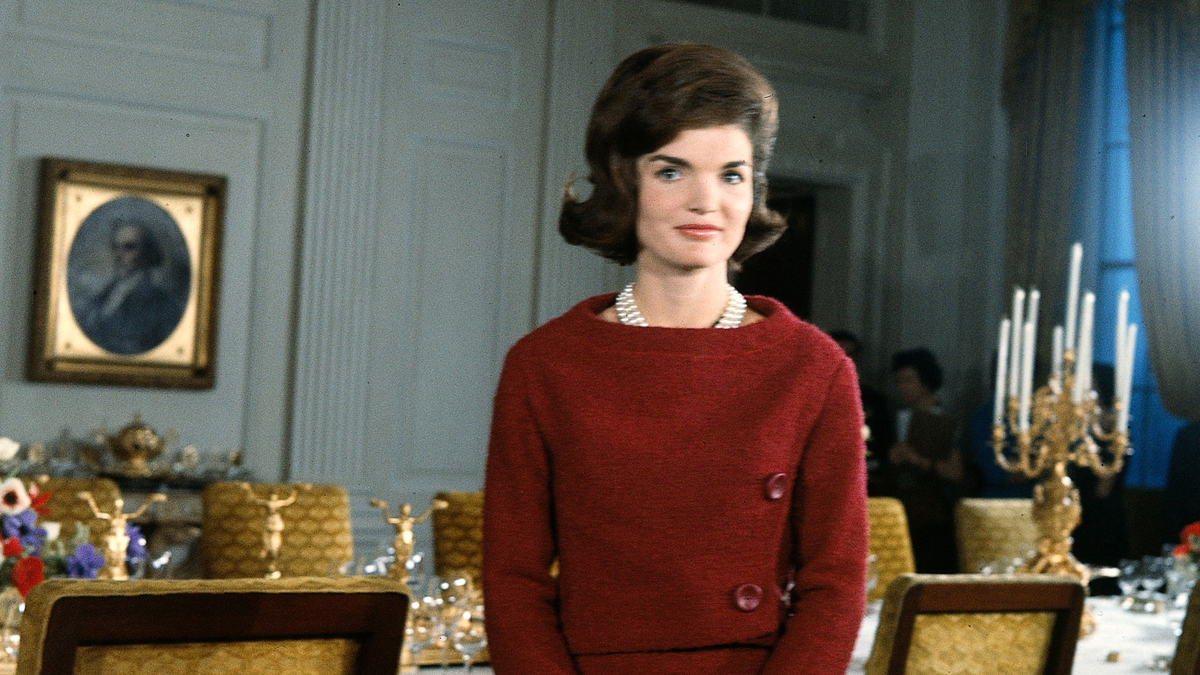Over the course of his first month in office, President Trump has signed a record number of executive orders affecting everything from immigration and climate change to medical research and geography.
In addition to reshaping America’s foreign and domestic policy, he also has plans to alter the White House itself. According to new reporting from the New York Times, President Trump would like to pave the historic White House Rose Garden so it more resembles his Palm Beach resort, Mar-a-Lago.
The president “has told associates that he wants to rip up the grass in the Rose Garden, one of the White House’s most iconic and meticulously maintained spots, and replace it with a hard surface to resemble a patio like the one he has at Mar-a-Lago.” Conversations about the proposed changes are reportedly happening almost every day.
Designers have “drafted options for how to remake the surface of the Rose Garden,” with conversations taking place regarding which materials would make the most sense to utilize and the “possibility of installing hardwood floors for dancing.”
Despite its name, the garden more closely resembles an open lawn lined with rose bushes and other plants rather than a traditional more sprawling garden. Per the Times, “The roses, apparently, will stay.”
While the administration has yet to comment on the record about specific plans for the Rose Garden, White House Communications Director Steven Cheung released a more general statement outlining Trump’s intentions to modify the building.
“The White House has not been given any tender, loving care in many decades, so President Trump is taking necessary steps in order to preserve and restore the greatness and glory of ‘the People’s House,’” he said.
According to the National Parks Department, which maintains the space, the Rose Garden has roots dating back to 1903 (accounts differ and some sources cite 1902), when a colonial-style garden was constructed by then First Lady Edith Roosevelt in the space. In 1913, First Lady Ellen Wilson designed the first Rose Garden in the same location.
But the iconic modern Rose Garden was established during the Kennedy administration. As part of then First Lady Jackie Kennedy’s wide-ranging efforts to restore the White House, President Kennedy enlisted a close friend, decorator Rachel Lambert “Bunny” Mellon, who had recently helped Jackie re-decorate the Kennedy’s Hyannis Port compound, to reinvent the outdoor space near the Oval Office, and to create a formal garden more reminiscent of the ones he and Jackie had seen in Europe during their 1961 state visit to France (which was followed by stops in England and Austria).
“The President had noted that the White House had no garden equal in quality or attractiveness to the gardens that he had seen and in which he had been entertained in Europe. There he had recognized the importance of gardens surrounding an official residence and their appeal to the sensibilities of all people,” Mellon would later recall. “He wanted to start, in the greatest haste, to remake the area near his office at the west end of the White House, known as the Rose Garden, into an area both useful and attractive.”
She, along with local landscape architect Perry Wheeler, conceived of the space, defining the corners of the garden with magnolia trees, and then framing the large open lawn with crab-apple trees, boxwoods, roses, and herbs, as well as a “tapestry of flowers that would change with the seasons.”
To this day, the Rose Garden continues to serve as a picturesque backdrop for a variety of events—press conferences, announcements, briefs, formal dinners, awards presentations, even multiple weddings—as well as a private space for first families to enjoy.
During Trump’s first term, Melania refreshed the garden, marking the first major changes to the design in 60 years. The renovation was quite controversial, with many critics focused on the removal of two rows of flowering crabapple trees (which were reportedly replanted elsewhere on the grounds). But the update modernized electrical and irrigation infrastructure and made the garden more accessible to people with disabilities. The First Lady has yet to comment publicly on her husband’s plans for the space.
The Rose Garden is only one piece of the Kennedy family legacy that Trump has turned his attention to. Earlier this month, he effectively named himself the chair of the Kennedy Center after installing allies on the board; he froze funding to and plans to decimate the U.S. Agency for International Development (USAID), which President Kennedy established in 1961; he signed an Executive Order directing the complete release of the remaining records related to JFK’s assassination; and of course, he nominated Robert F. Kennedy Jr., the son of Senator Kennedy, to serve as Secretary of Health and Human Services. RFK Jr. was sworn in to the position on Thursday.
Related Story
Caroline Hallemann is the Digital Director at Town & Country, where she covers culture, society, and entertainment, as well as the British royal family, among a variety of other topics. Prior to leading the digital team at T&C, she served as the brand’s Senior News Editor and Digital News Director, and has previously held positions at Travel + Leisure, DailyCandy, and Parenting Magazine. Caroline is also currently writing a book about the Kennedy family and the British royals, and she lives in Nashville, Tennessee with her husband and their son, Tommy. You can find her on Instagram at the handle @challemann and on TikTok at @carolinehallemann.


